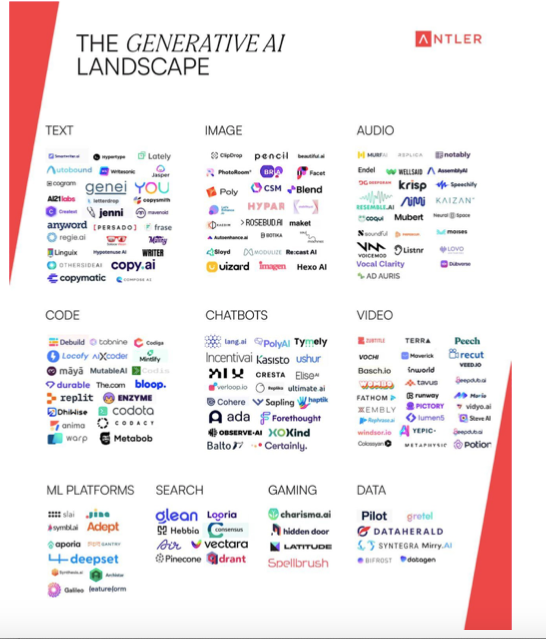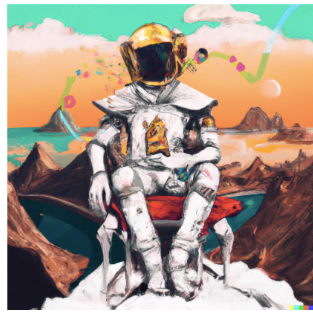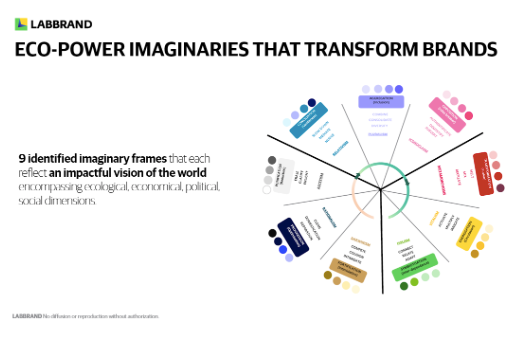6 Key Global Branding Trends And Predictions For 2023 And Beyond
By: Ying Mu, GM at Labbrand New York

As 2023 unfolds, here are six key global branding trends that will influence our industry in the future.
- Global Brand Synergy After COVID
- Meaningful Metaverse Brand Strategy
- Generative AI Technology Integration
- Transformation to Humanized Enterprise
- Eco-Powered for Growth
- The Rise of Gen Z and Gen Alpha
Global Brand Synergy After COVID
2023 will no doubt be the year that the world really ‘recovers’ from COVID. Travel restrictions have been lifted. Transparent walls between countries and continents will gradually disappear. Brands are also shifting to focus on global brand synergies in 2023, which was difficult for the past two years. We’re going to see large-scale global branding campaigns and initiatives and headquarters making new efforts to understand the local market & cultural shifts that happened during COVID.
Based on these consumer behaviors, we’ll witness brands entering new markets, or a re-calibration of local brand strategies and positioning.
Meaningful Metaverse Brand Strategy
The early 2020s will mark history as the foundational playing ground for Metaverse. Over the past few years, we’ve noticed brands pushing themselves to explore Web3 and metaverse solutions, in the hope of not missing out on the next ‘boom”. Predominantly, it has been brands trying to understand this new field and launching an NFT type of product with an artist to test the water, especially fashion and luxury brands where the concept of ‘exclusiveness’ is a core selling point.
From 2023 and beyond, we’re going to witness more brands from other industries hopping on this bandwagon, but at the same time, pioneering brands will start to explore more meaningful metaverse brand strategies. Brands are reflecting on how to better build their presence beyond just launching virtual goods or establishing virtual real estate/stores.
We’re going to see tactics or initiatives that help to grow user or customer engagement, drive productivity and efficiency, and enhance real-world experiences – mixing metaverse NFT with real-life touch points to cross a threshold.
Generative AI Technology Integration
AI has been part of our lives for many years now, very often it’s somewhat ‘hidden’ from consumers, such as algorithms that impact the content we browse, the products we see on Amazon and even the route we take to drive to work. However, generative AI technologies, especially image and text, have been taking center stage recently, with consumers using it on a regular basis and directly impacting the world of branding and marketing because they shake a core foundational value – “creativity”.

We’ve all seen AI-generated images or profile pictures floating around our own social media platforms. You don’t need to be ‘creative’ to create these amazing artworks anymore. You don’t need to be an excellent writer to produce copywriting – for example, Ryan Reynolds used ChatGPT to write a Mint Mobile ad. These technologies have gone “viral” and growing investments will pour into this already booming industry. The creative community will find ways to work together with generative AI in the future, integrating its power as part of the work process. Sure, it’ll never truly replace creative talents, but it’ll greatly impact the way we do creative ideation internally and campaigns that involve consumer engagement.
Examples of artworks I created using OpenAI’s DALL-E 2


Transformation to Humanized Enterprise
Accenture research revealed that 69% of consumers globally think that paradoxical behaviors are both human and acceptable. And sure enough, with the rise of technology such as Metaverse or AI, we’ll also see a rise in humanized enterprise transformations. Companies and brands will place greater emphasis on the belief that ideas can change the world. Simply “maximize shareholder value” is a thing of the past, understanding and prioritizing human values (eg. diversity & inclusion, mental wellness), investing in employees themselves, sustainability (which will get its own section) and mega social shifts are in. This will not only impact the way current companies conduct their branding activities but also strongly influence the new brands that we’ll create and see in the future.
Eco-Powered for Growth
The commitment to be carbon neutral by 2030 is fast approaching its deadline. Sustainability is a dominant and core value that brands will continue to strive for and emphasize in 2023 and beyond. We’ll see more packaging innovations that help to reduce waste and leverage recycled materials. We’ll see re-branding and the launch of new brands that reflect this core value. With the growing spotlight on sustainability, simply slapping a green leaf on branding materials will not be enough. Brands will need to build more comprehensive eco-powered imaginaries that truly transform the business. Eco-responsibility is the new normal, the new modern, and soon the new legal.
9 sustainability imaginary frameworks identified by Labbrand

The Rise of Gen-Z and Gen-Alpha
Often being labeled as the first ‘digital natives”, Gen Zs are maturing into the workforce with increasing purchasing power. We’re all aware that their expectations and consumption habits differ from the previous generations and brands are adapting quickly to capture these opportunities. For example, for Gen Z, TikTok is the new search engine (sorry Google). The same story is true on the other side of the world. In China, another social platform called Xiaohongshu (or RED) is a more trusted search engine as opposed to Baidu. And for Gen-Alpha, Roblox is the king.
These behaviors mean that in 2023 and beyond, we’ll notice brands experiencing new branding tactics, shifting media spending, and trying out new collaborations to engage with different generational segments.





